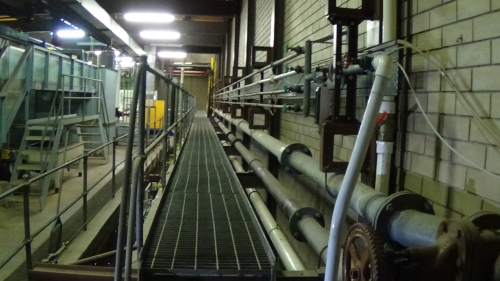Introduction

The energy required to push water through a pipeline is dissipated as friction pressure loss, in m.
“Major” losses occur due to friction within a pipe, and “minor” losses occur at a change of section, valve, bend or other interruption. In this practical you will investigate the impact of major and minor losses on water flow in pipes.
Major losses
Minor losses
where
f = friction factor
k = minor loss coefficient
L = Length (m)
D = Diameter (m)
V = Velocity (m/s)
Supporting Information
Major Losses
Pressure loss is proportional to L/D ratio and velocity head. For low velocities, where the flow is laminar, friction loss is caused by viscous shearing between streamlines near the wall of the pipe and the friction factor (f) is well defined.
For high velocities where the flow is fully turbulent, friction loss is caused by water particles coming into contact with irregularities in the surface of the pipe and friction factor itself is a function of surface roughness.
In most engineering applications, the velocity is less than that required for fully turbulent flow and f is a function of both the viscosity of a boundary layer and the roughness of the pipe surface. Values of f can be determined experimentally and plotted in dimensionless form against Reynolds Number Re to from a Moody Diagram.
Minor Losses
Minor losses behave similarly to major losses, where a device with a large k value leads to a high pressure loss. In general, a very sudden change to the flow path contributes to significant pressure loss.

